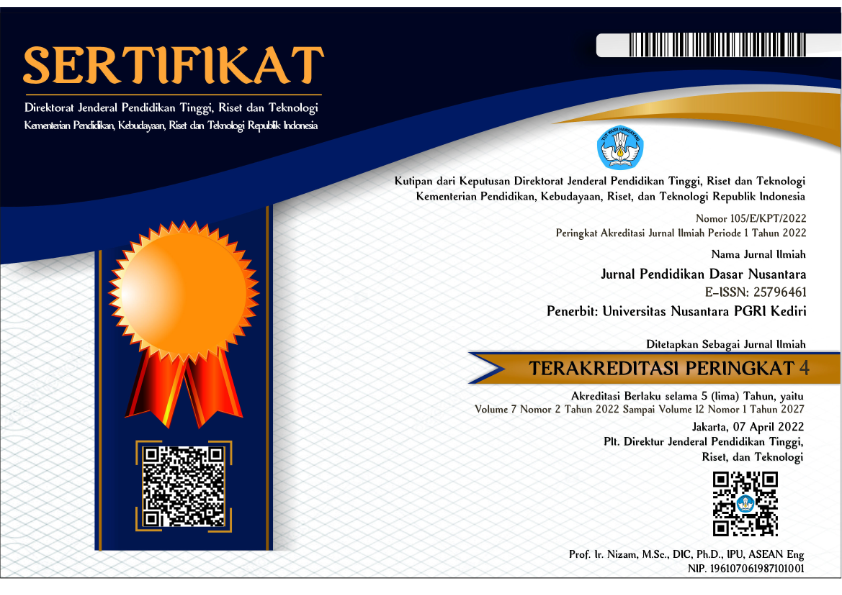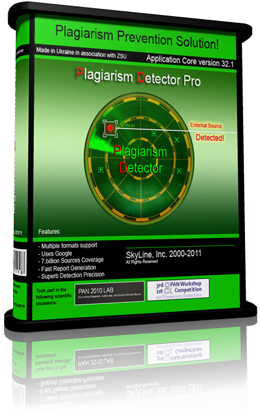The effect of the use of information and communication technology (ICT) learning media on the student’s learning activity in class V SD Negeri Pannara Makassar City
DOI:
https://doi.org/10.29407/jpdn.v7i2.16927Keywords:
ICT learning media, student learning activity.Abstract
This study uses a quantitative approach with the type of research True-Experimental Design with Pretest-Posttest Control Group Design. The purpose of this study was to determine the effect and description of student learning activity before and after the use of information and communication technology (ICT) learning media in Pannara Makassar Elementary School. Data collection techniques used observation sheets (observations), questionnaires (questionnaires), and documentation. The population is all fifth grade students of SD Negeri Pannara Makassar. The sampling technique used is the total sampling technique. The data analysis technique used is descriptive analysis and inferential analysis. The results showed that the use of Information and Communication Technology (ICT) learning media was well implemented. Based on the results and implementation. Student learning activity in learning before using Information and Communication Technology (ICT) learning media (freetest) in the experimental group in the low category 24.00%, the medium category 20.00%, the high category 56.00% and in the very high category 24.00% and the control group in the low category was 32.00%, the medium category was 40.00%, the high category was 28.00%, and the very high category was 24.00%. After being treated with the use of Information and Communication Technology (ICT) learning media, there was an increase in student learning activity in the experimental group with low 0.00%, medium 12.00%, high 32.00%, and very high 56.00% categories. While the control group is in the low category of 0.00%, moderate 20.00%, high 56.00%, and very high 24.00%. From these acquisitions, the use of Information and Communication Technology (ICT) learning media has an effect on the learning activities of Pannara Makassar Elementary School students.
Downloads
References
A’la Miftahul. 2010. Quantum Teaching (Buku Pintar dan Praktis). Yogjakarta: Diva Press.
Alfatru, Nawawi. 2010. Keaktifan Belajar. (Online) Vol. 3 No. 3 (http: // nawawielfatru. blogspot. com / 2010/ 07/keaktifan belajar. html#comments).
Arif S. Sadiman, dkk. 2008. Media Pendidikan. Jakarta: PT Raja Grafindo Persada.
Arfiyunanda. 2017. Pengaruh Saran TIK Terhadap Motivasi Belajar Siswa dalam PembelajaranTIK”https://repository.uksw.edu/bitstream/123456789/13933/1/T1_702011035_Full%20text.pdf
Arsyad, Azhar. 2016. Media Pembelajaran. Jakarta: PT Grafindo Persada.
Budiana, Sjafirah, dan Bakti. 2015. “Pemanfaatan Teknologi Informasi dan Komunikasi dalam Pembelajaran bagi para Guru SMPN 2 Kawali Desa Citeureup Kabupaten Ciamis”, Jurnal Aplikasi Ipteks untuk Masyarakat, Vol. 4 No. 1, hlm. 59-60.
DePorter, Bobbi. (2005). Quantum Teaching and Learning. Diterjemahkan oleh Ary Nilandari. Bandung: Kaifa.
Dimyati & Mujiono. 2006. Belajar dan Pembelajaran. Jakarta: Rineka Cipta.
Djamarah & Syaiful Bahri. 2006. Guru dan Anak Didik dalam Interaksi Edukatif. Jakarta: Rineka Cipta.
Hamzah B. Uno & Nina Lamatenggo. (2011). Teknologi Komunikasi & Informasi Pembelajaran. Jakarta: Bumi Aksara.
Irkham, Abdaul Huda. 2020. “perkembangan Teknologi Informasi dan Komunikasi (TIK) Terhadap Kualitas Pembelajaran di Sekolah Dasar”. Jurnal Pendidikan dan Konseling, Vol.2 No. 1, hlm. 3.
Prasojo, Lantip Diat dan Riyanto. 2011. Teknologi Informasi Pendidikan. Yogyakarta: Gava Media.
Sanjaya, Wina. 2007. Strategi Pembelajaran Berorientasi Standar Proses Pendidikan. Jakarta: Kencana.
Suci, Zakiah dan Irfan, Hilman. 2018. “Penggunaan TIK Sebagai Sumber dan Media Pembelajaran Inovatif di Sekolah Dasar”. Jurnal Og Primay Education, Vol.2 No. 2, hlm. 49.
Sudjana. 2009. Penilaian Hasil Proses Belajar Mengajar. Bandung: Remaja Rosdakarya.
Safei, Muhammad. 2013. Teknologi Pembelajaran Berbasis TIK. Cet. 1; Makassar: Alauuddin University Pers.
Undang-Undang Republik Indonesia Nomor 20 tahun 2003 tentang Sistem Pendidikan Nasional. Jakarta: Dharma Bhakti
Warsita, Bambang. (2008) Teknologi Pembelajaran: Landasan &Aplikasinya. Jakarta: Rineka.
Yusri. 2016. Pengaruh Penggunaan Media Teknologi Informasi dan Komunikasi (TIK) dengan Prestasi Belajar Bahasa Inggris Peserta Didik Kelas X di SMAN I Dekai Kabupaten Yahukim” (Jurnal Ilmiah ILKOM Volume 8 Nomor 1 (April 2016)
Zabir, Ashari. (2018). Pengaruh Pemanfaatan Teknologi Pembelajaran Terhadap Motivasi Belajar Siswa SMPN 1 Lanrisang Kabupaten Pinrang. http://eprints.unm.ac.id/9823/1/Jurnal%20azhari.pdf
Downloads
Published
Issue
Section
License
Authors who publish with this journal agree to the following terms:
- Copyright on any article is retained by the author(s).
- The author grants the journal, the right of first publication with the work simultaneously licensed under a Creative Commons Attribution License that allows others to share the work with an acknowledgment of the work’s authorship and initial publication in this journal.
- Authors are able to enter into separate, additional contractual arrangements for the non-exclusive distribution of the journal’s published version of the work (e.g., post it to an institutional repository or publish it in a book), with an acknowledgment of its initial publication in this journal.
- Authors are permitted and encouraged to post their work online (e.g., in institutional repositories or on their website) prior to and during the submission process, as it can lead to productive exchanges, as well as earlier and greater citation of published work.
- The article and any associated published material is distributed under the Creative Commons Attribution-ShareAlike 4.0 International License
































